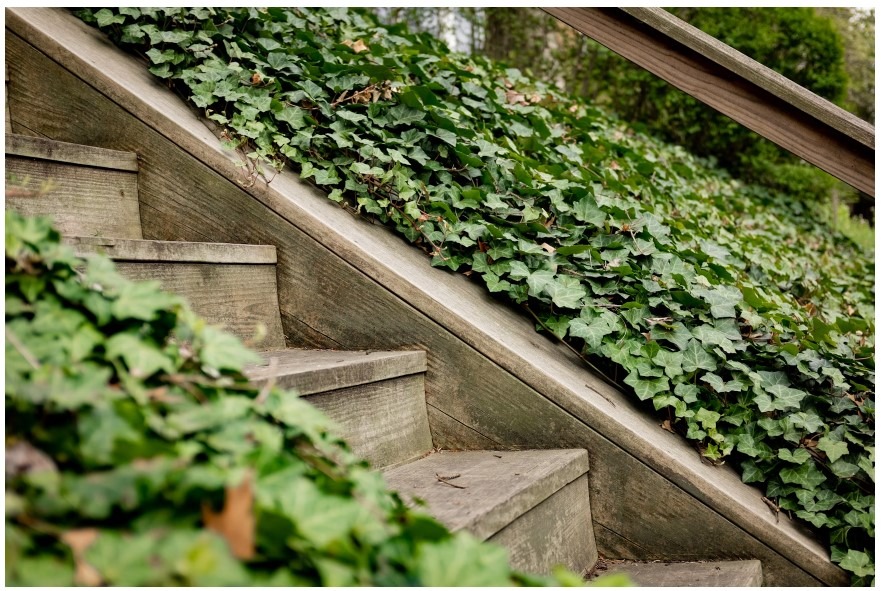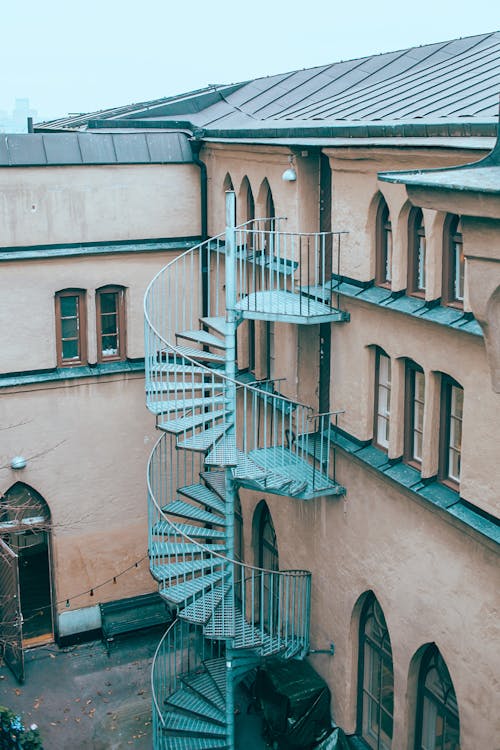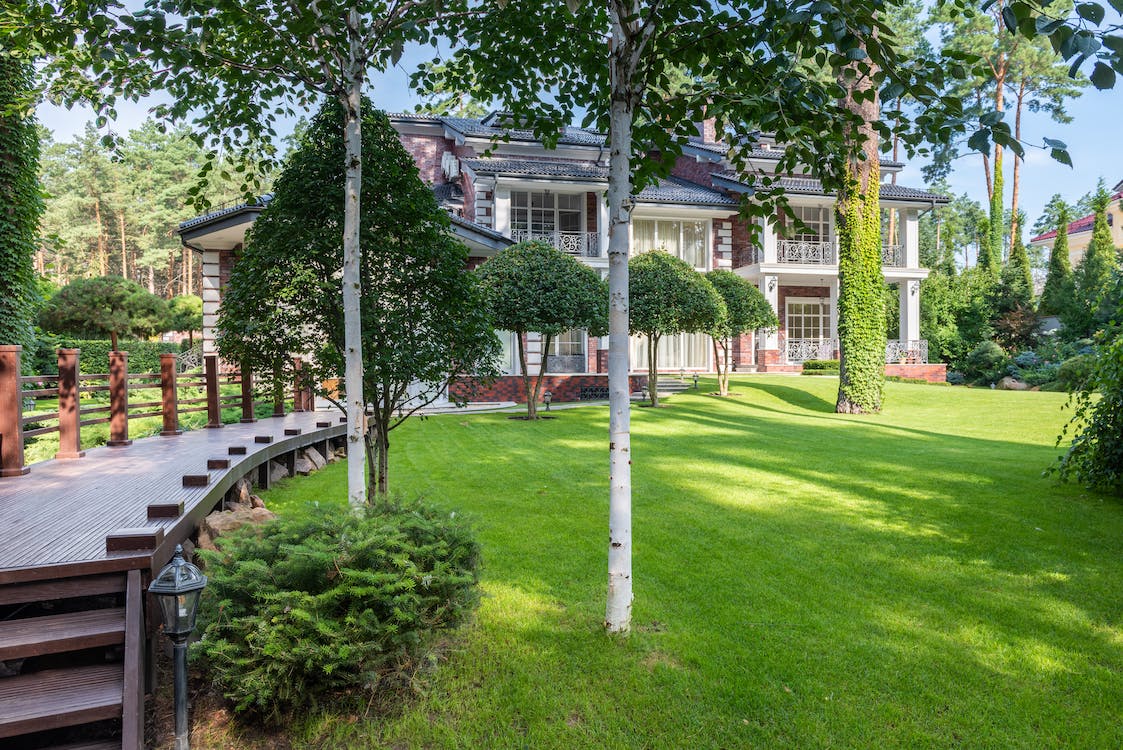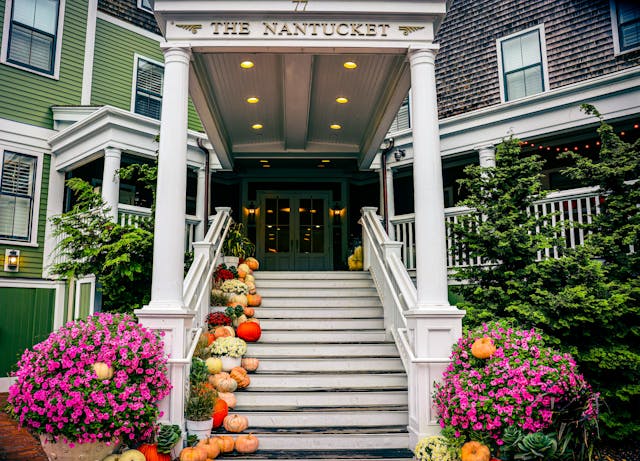Outdoor staircases serve as a functional and decorative element in landscape design, providing essential access to different levels in a backyard. Their construction and style are pivotal considerations since they directly affect usability and aesthetics. Homeowners looking to enhance their outdoor living space often choose staircases tailored to the specific contours and style of their property. Whether the aim is to connect a deck to a garden, create a meandering path down a slope, or offer a grand entrance to outdoor features, the right staircase can significantly improve backyard access.
Design options range from natural stone steps that blend seamlessly with the environment to weatherproof metal spiral staircases that offer durability and a touch of modernity. Material choice plays a crucial role in defining the staircase’s longevity and maintenance requirements. Woods like IPE and Teak are popular for their resilience and ability to withstand outdoor conditions, and when pressure-treated, they can last an average of 15-30 years. Metal stairs, particularly those made of aluminum, are another durable option that can also be cost-effective and simple to install.
The design of outdoor staircases is not only about durability but also customizability. Functional elements such as under-stair storage can add utility, while the right size and scale ensure the stairs meet the users’ needs. For example, wider stairs may be necessary for high-traffic areas or as part of an entryway to accommodate multiple people, while more narrow, single-track steps might be sufficient for a less frequented garden path. Choosing the appropriate staircase design is a balancing act between form and function, creating a backyard access point that is both practical and visually pleasing.
Designing Outdoor Staircases
Designing outdoor staircases requires a careful selection of materials and an aesthetic sense to create a feature that is both beautiful and functional. The design should complement the landscape and provide a safe and elegant means of traversing the outdoor environment.
Choosing the Right Materials
Materials play a critical role in the longevity and maintenance of outdoor staircases. Hardwoods are often favored for their durability and resistance to outdoor elements—such as moisture and insects. Alternatives like concrete and metal can provide structural strength, but each material must be chosen based on both the climate it will face and the style it will contribute to the overall landscape.
- Wood: Hardwoods like teak, mahogany, or cedar
- Stone: Natural stone, concrete pavers, or flagstone
- Metal: Stainless steel, wrought iron, or aluminum
Incorporating Style and Elegance
The staircase should not only serve a function but also enhance the visual appeal of the outdoor space. Designers should integrate the stairs with the existing landscape, opting for curves or straight lines to match the garden’s geometry. Adding features such as garden lights or integrating planters can introduce additional points of interest and elevate the staircase’s elegance.
- Design Elements:
- Curved steps for natural landscapes
- Geometric patterns for modern gardens
- Lighting fixtures for ambiance and visibility
Ensuring Safety and Functionality
Safety is paramount when accessing different levels in an outdoor space. Treads should be wide enough for comfortable use, with a non-slip surface suitable for all weather conditions. Handrails contribute to safety, especially in areas with significant height differences. The design should also comply with local building codes to ensure they are up to the necessary safety standards.
- Safety Features:
- Non-slip treads
- Sturdy handrails
- Adequate step height and tread depth
By addressing these key aspects, one can ensure that the outdoor staircase provides a reliable and attractive passage through the landscape.
Planning Your Staircase
The planning of an outdoor staircase is pivotal, as it involves careful consideration of the landscape, exact measurements, and ensuring functional access to a deck or patio.
Understanding Landscape and Slope
One must assess the natural terrain where the staircase will be constructed. It is crucial to identify the slope of the landscape to ensure the steps provide a safe gradient for ascent and descent. The area should be cleared and leveled, with any low spots filled to prevent water accumulation.
Assessing Size and Dimensions
Size and dimensions of the staircase are fundamental to the project’s success. The width should accommodate multiple individuals if it’s an entry stairway, while a garden path may require less. The rise and run of each step need to adhere to both aesthetic appeal and regulatory standards, maintaining uniformity for safety and comfort.
- Optimal Stair Dimensions:
- Rise (height per step): Typically 6-7.75 inches
- Run (depth per step): Typically 10-11 inches
- Width: Minimum of 36 inches for public access
Considerations for Deck and Patio Access
For staircases leading to a deck or patio, one must consider the integration with the existing structure. It involves not only the aesthetic synchronization but also the practicality of the entry and exit points. Steps should align directly with doorways or access points and complement the overall design of the deck or patio to create a cohesive look and feel.
- Deck Stairs Integration Checklist:
- Stair placement aligns with doorways
- Secure attachment to deck or patio structure
- Adequate landing space provided for ease of movement
Types of Outdoor Staircases
When considering outdoor staircases for backyard access, homeowners have a variety of styles to choose from. Each type offers unique aesthetic appeal and functional benefits, aligning with various landscape designs and personal tastes.
The Allure of Spiral Stairs
Spiral staircases stand out for their compact footprint and elegant vertical ascent. They are ideal for tight spaces where a traditional staircase might not fit. The helical form of spiral stairs not only serves a practical purpose but also creates a focal point in any outdoor setting, offering a distinct touch of uniqueness to the landscape.
The Simplicity of Straight Staircases
Straight staircases are the quintessence of straightforwardness and functional design. They are characterized by an unbroken run of steps extending in one direction, making them easy to ascend and descend. Because of their uncomplicated structure, they are often easier and more cost-effective to construct than more complex designs.
Custom Design Options
For homeowners looking for something tailor-made, custom design options provide the opportunity to create staircases that are truly one-of-a-kind. Custom-built staircases can include a mix of materials and styles, from traditional wood and stone to modern glass and steel, blending the stairs seamlessly with the home’s exterior and the natural environment. Unique embellishments or practical features, like built-in storage or integrated lighting, can further enhance both the utility and elegance of the outdoor space.
Materials for Durability and Aesthetics
Choosing the right materials for outdoor staircases is crucial for ensuring long-lasting durability and eye-catching aesthetics. Homeowners must consider the material’s ability to withstand various weather conditions, as well as how it complements the home’s exterior design.
Wood and Its Timeless Appeal
Wood is valued for its classic appearance, bringing warmth and natural beauty to any outdoor space. For longevity, hardwoods such as teak, ipe, and mahogany are favored due to their resistance to decay and capacity to endure weather extremes. Nevertheless, this material does demand consistent maintenance to prevent rotting, warping, and wear from exposure.
- Advantages:
- Natural aesthetics
- Versatility in design
- Maintenance:
- Periodic sealing or staining
- Regular inspection for damage or decay
Metal for a Sleek Look
Metal staircases, particularly those made of aluminum and steel, offer a modern and sleek alternative. These metals are celebrated for their strength, durability, and minimal upkeep. Aluminum stands out as a lightweight, weather-resistant option that doesn’t rust, making it an ideal choice for areas with high moisture levels.
- Features to Note:
- Aluminum: Rust-proof and lightweight
- Steel: Robust and can be treated to resist corrosion
- Design Flexibility:
- Can be finished in a variety of colors and textures
Stone and Concrete Options
Stone and concrete are synonymous with sturdiness and permanence. Both materials excel in resisting wear from traffic and harsh climates and come in diverse styles and textures, enhancing an outdoor staircase’s visual appeal.
- Stone:
- Varieties: Flagstone, limestone, granite
- Attributes: Each piece unique, naturally slip-resistant
- Concrete:
- Benefits: Low cost, can mimic the appearance of stone or brick
- Customization: Wide range of colors and finishes available
Installation Process
The installation process for outdoor staircases involves meticulous site preparation, careful installation of handrails and treads, and applying finishes for durability and aesthetic appeal.
Preparing the Site
Firstly, they must select a clear, level area for the staircase. The area should be free of shrubs and plants. It is essential to level the ground and ensure that it slopes away from the house for proper drainage. The stability of the stairs relies on how well the site is prepared before the actual construction begins.
Installing Handrails and Treads
Once the site is ready, the next step is to install the stringers, which serve as the backbone of the staircase. Handrails are then attached for safety, whose height must comply with local building codes. Lastly, the treads, which are the horizontal boards that make up the steps, are securely affixed to the stringers. The installation process here must prioritize sturdiness and even spacing to ensure safe and easy navigation up and down the stairs.
Finishing Touches: Coatings and Stain
To finalize the staircase, they apply protective coatings and stain to both treads and handrails, protecting the wood from weather elements and reducing maintenance requirements. Selecting the right stain can also enhance the wood’s natural beauty and seamlessly integrate the staircase with the backyard environment.
Accessorizing Outdoor Stairs
Outdoor stairs not only serve a functional purpose but also offer an opportunity to enhance the aesthetics and usability of backyard spaces. Accessorizing these stairs involves careful consideration of the surrounding landscape and the incorporation of elements that provide both beauty and functionality.
Integrating with Gardens and Pathways
An effective way to accessorize outdoor stairs is to integrate them seamlessly with gardens and pathways. Landscaping around the stairs with plants and flowers that complement the overall design can create a cohesive look. For instance:
- Floral Borders: Lining the sides of the staircase with flowers like lavender or roses adds color and fragrance.
- Climbing Plants: Utilizing trellises with climbing plants such as ivy can soften the hard lines of the stairs and give a lush backdrop.
Gardens and pathways leading to the stairs should harmonize with the styles of the steps, using similar or complementary materials and design motifs to provide a unified outdoor experience.
Adding Decorative and Functional Lighting
Lighting is a critical accessory for outdoor stairs, enhancing both safety and ambiance. When it comes to lighting, one should balance decorative elements with functional needs. Here are specific ideas:
- LED Step Lights: Install small LED lights into the risers of the stairs for a modern look and improved visibility.
- Solar Pathway Lights: Align solar lights along the pathway leading to the stairs for an eco-friendly lighting solution that automatically illuminates at dusk.
The choice of lighting should not only reflect the style of the stairs and landscape but also ensure that the stairs are safe to use at all hours, effectively merging aesthetic appeal with practicality.
Maintaining Your Outdoor Staircase
Proper maintenance is essential for extending the lifespan of an outdoor staircase. They should be regularly inspected for signs of wear and treated with weatherproof finishes to ensure durability and quality.
Regular Inspection and Repair
Regular inspections can identify minor issues before they become major problems. Homeowners should look for:
- Loose components: Check if steps or railings are wobbly.
- Corrosion or rot: Metal parts can rust, while wood may decay.
- Cracks in concrete: Small cracks can expand and cause structural issues.
Repairs should be addressed promptly. A good practice is to schedule inspections at least twice a year, in spring and fall.
Weatherproof Finishes and Durability
The choice of finish can significantly affect the durability of outdoor stairs. Consider:
- Sealants: Apply a high-quality sealant to wood stairs to prevent water damage.
- Paints: Use paints designed for outdoor use that resist fading and mildew.
- Metal treatments: Anti-rust coatings can protect metal stairs from corrosion.
Weatherproofing not only preserves appearance but also strengthens the structure. Reapplication of finishes should follow manufacturer recommendations, which usually suggest every few years, depending on the product and exposure to elements. It’s also wise to check the warranty of the staircase materials and finishes, as this can guide maintenance schedules and techniques.
Outdoor Staircase Regulations and Compliance
Compliance with safety codes and standards is essential for outdoor staircases used for backyard access. These regulations are designed to ensure the safety and accessibility for all users.
Safety Codes and Standards
Building Codes: The International Building Code (IBC) and local building codes provide specific requirements for outdoor staircases. For instance, IBC Section 1027.3 dictates that exterior stairs serving as part of required egress must be open on one side, though structural elements like beams and handrails are permitted.
Americans with Disabilities Act (ADA): For public spaces, outdoor staircases must adhere to guidelines set by the ADA, such as those put forth by the United States Access Board. These guidelines ensure that stairs are accessible to people with disabilities.
- Dimensions: Stair treads and risers must have uniform dimensions within each flight of stairs, minimizing trip hazards.
- Handrails: Handrails must be provided on both sides for safety and aide people with mobility impairments.
- Surfaces: Outdoor stairs must be designed to prevent the accumulation of water, which can lead to hazardous conditions such as slipping due to ice, snow, or algae growth.
Compliance: It is required for all stairs on required egress routes, even if the stairway has only a single riser. Standards also address the necessary width, headroom, and landings to provide safe egress.
Exclusions: Certain types of stairs, such as ship’s ladders and alternating tread devices, are not covered by the standard stairway regulations as they are not considered part of a required means of egress.
It is the responsibility of the facility owner to ensure compliance with all applicable regulations to avoid penalties and ensure the safety of users. Compliance not only prevents legal issues but also contributes to the overall safe use of outdoor staircases in various weather conditions.








